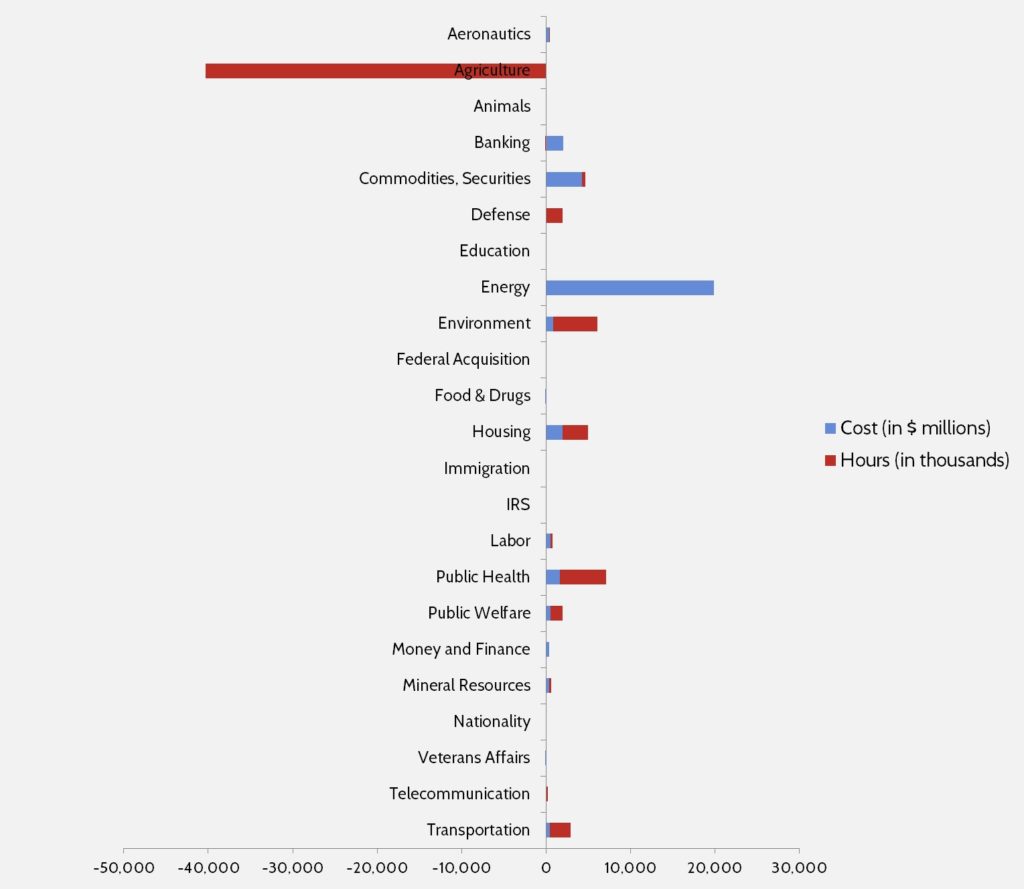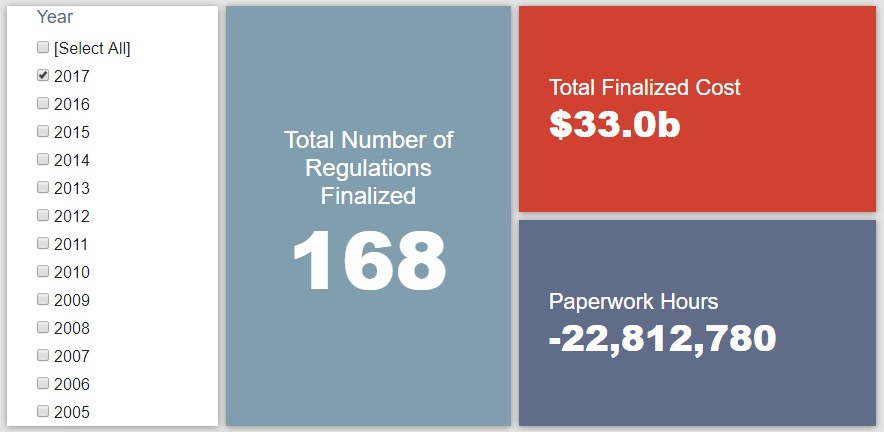Week in Regulation
September 11, 2017
A Slow Start To September
The muted regulatory flow from August seems to continue apace into the first week of September. The only rulemakings with quantified cost estimates were a handful of routine “airworthiness directives.” All told, these actions included a grand total of $22.7 million in compliance costs. There were no monetized benefits or paperwork burden estimates. The per capita regulatory burden for 2017 is $452.
Regulatory Toplines
- New Proposed Rules: 21
- New Final Rules: 46
- 2017 Total Pages of Regulation: 42,499
- 2017 Final Rules: $33 Billion
- 2017 Proposed Rules: $111.8 Billion
The American Action Forum (AAF) has catalogued regulations according to their codification in the Code of Federal Regulations (CFR). The CFR is organized into 50 titles, with each title corresponding to an industry or part of government. This snapshot of final rules (a change from earlier versions) will help to determine which sectors of the economy receive the highest number of regulatory actions.
Tracking Regulatory Modernization
There were no quantified deregulatory measures published this past week. However, there were some interesting items on that front. The Food and Drug Administration solicited public comment for deregulatory ideas on seven areas of its regulatory portfolio. On the environmental side, per media reports, the Environmental Protection Agency appears set to publish its review of the Clean Power Plan “in the fall of 2017.” That proposal has been under review at the Office of Information and Regulatory Affairs since June.
On regulatory budget implementation, below are the agencies that have accrued annual savings or new costs under the president’s one-in, two-out budget; proposed rules are not included:
- Defense: -$400 million
- Interior: -$360.37 million
- Education: -$100 million
- Labor: -$78 million
- Veterans Affairs: -$1.9 million
- HHS: $23.91 million
- EPA: $60 million
- Energy: $34 million
Many of these figures are the result of CRA resolutions of disapproval. Given their historic regulatory output, AAF can predict that Defense, Interior, and Education will likely meet the goal of $0 in net regulatory costs by the end of this fiscal year.
Affordable Care Act
Since passage, based on total lifetime costs of the regulations, the Affordable Care Act has imposed costs of $53 billion in final state and private-sector burdens and 176.9 million annual paperwork hours.
Dodd-Frank
Click here to view the total estimated revised costs from Dodd-Frank; since passage, the legislation has produced more than 74.8 million final paperwork burden hours and imposed $38.9 billion in direct compliance costs.
Total Burdens
Since January 1, the federal government has published $144.8 billion in compliance costs ($33 billion in final rules) and has cut 17.3 million paperwork burden hours (due to 22.8 million in reductions from final rules). Click below for the latest Reg Rodeo findings.












